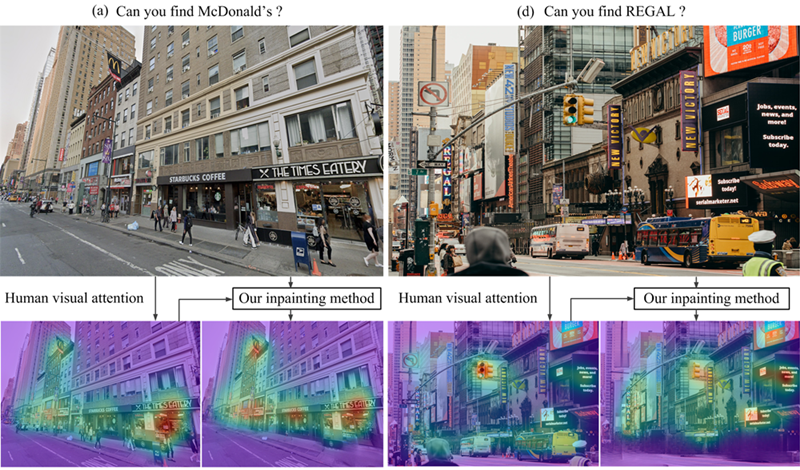A Saliency-Guided Street View Image Inpainting Framework for Efficient Last-Meters Wayfinding
Global Positioning Systems (GPS) have played a crucial role in various navigation applications. Nevertheless, localizing the perfect destination within the last few meters remains an important but unresolved problem. Limited by the GPS positioning accuracy, navigation systems always show users a vicinity of a destination, but not its exact location. Street view images (SVI) in maps as an immersive media technology have served as an aid to provide the physical environment for human last-meters wayfinding. However, due to the large diversity of geographic context and acquisition conditions, the captured SVI always contains various distracting objects (e.g., pedestrians and vehicles), which will distract human visual attention from efficiently finding the destination in the last few meters. To address this problem, we highlight the importance of reducing visual distraction in image-based wayfinding by proposing a saliency-guided image inpainting framework. It aims at redirecting human visual attention from distracting objects to destination-related objects for more efficient and accurate wayfinding in the last meters. Specifically, a context-aware distracting object detection method driven by deep salient object detection has been designed to extract distracting objects from three semantic levels in SVI. Then we employ a large-mask inpainting method with fast Fourier convolutions to remove the detected distracting objects. Experimental results with both qualitative and quantitative analysis show that our saliency-guided inpainting method can not only achieve great perceptual quality in street view images but also redirect the human's visual attention to focus more on static location-related objects than distracting ones. The human-based evaluation also justified the effectiveness of our method in improving the efficiency of locating the target destination.
PDF Abstract



 Cityscapes
Cityscapes
 Places
Places
 SALICON
SALICON